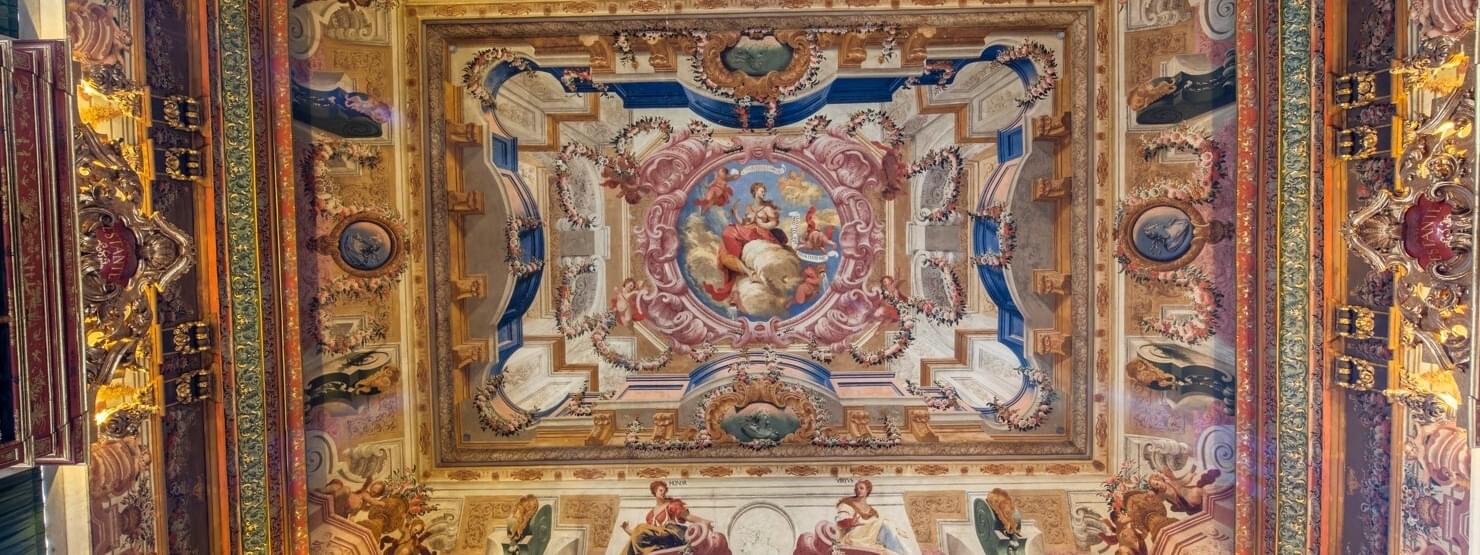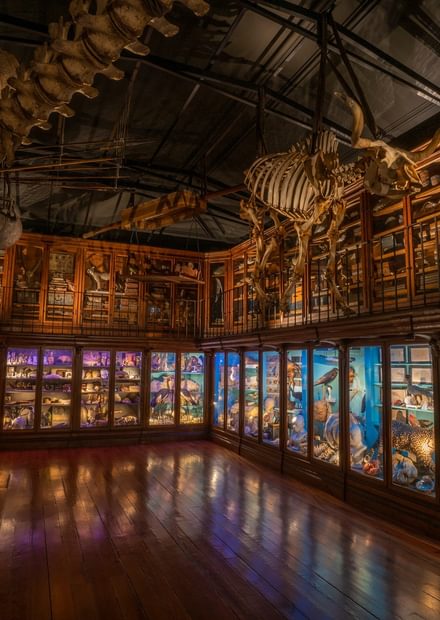The University of Coimbra is listed as UNESCO World Heritage site since June 2013, following the unanimous decision of the World Heritage Committee, gathered in Phnom Pehn in Cambodia.
This asset includes highly important buildings, erected in different chronological periods, over an area of 81,5 ha. There are 4 main poles: the colleges of Rua da Sofia, the Upper-town colleges, the group of buildings that resulted from the Marquis de Pombal reform and the group of buildings of the Estado Novo period.
The University of Coimbra, the uptown (“Alta”) and Sofia were classified by UNESCO as World Heritage sites. According to the Rector of the prestigious University of Coimbra, “the decision of UNESCO underlines the universal value of the Portuguese culture and language, as well as the major role played by Portugal in the formation of the world as we know it”.
Coimbra becomes the 15th UNESCO World Heritage site in Portugal. Situated on a hill overlooking the city, the University of Coimbra with its colleges grew and evolved over more than seven centuries within the old town. Notable university buildings include the 12th century Cathedral of Santa Cruz and a number of 16th century colleges, the Royal Palace of Alcáçova, which has housed the University since 1537, the Joanine Library with its rich baroque decor, the 18th century Botanical Garden and University Press, as well as the large “University City” created during the 1940s.
The University’s buildings became a reference in the development of other institutions of higher education in the Portuguese-speaking world where it also exerted a major influence on learning and literature. Coimbra offers an outstanding example of an integrated university city with a specific urban typology as well as its own ceremonial and cultural traditions that have been kept alive through the ages.
Top sights: University of Coimbra
University of Coimbra
Coimbra became the 15th UNESCO World Heritage site in Portugal. Situated on a hill overlooking the city, the University of Coimbra with its colleges grew and evolved over more than seven centuries within the old town. Notable university buildings include the 12th century Cathedral of Santa Cruz and a number of 16th century colleges, the Royal Palace of Alcáçova, which has housed the University since 1537, the Joanine Library with its rich baroque decor, the 18th century Botanical Garden and University Press, as well as the large “University City” created during the 1940s.
Joanine Library of the University of Coimbra
When a single space reunites a literary treasure beyond compare and the opulence of early 17th century architecture and arts, the result is one of the most spectacular and original European libraries in Baroque style.
At Joanine Library, there are worlds inside worlds, inside worlds; here, everything is knowledge and art invites you to discovery. There are thousands of works which lay upon a lavish space full of beauty and exoticism, where the richness of the painted ceilings is in harmony with the balustrades and shelves made of golden leaves and wood from the tropics. Enjoy the scholar knowledge of this bounded treasures here protected by the magnificence of the Joanine Baroque style.
Don't miss the chance to pay a visit to Sala dos Capelos, the main room of the University of Coimbra, and to the breath-taking St. Michael's Chapel, a pearl of Manueline style.
Tower of the University of Coimbra
Paço das Escolas is dominated by one of the most symbolic structures in Coimbra, its 17th century Tower which holds the clock and bells that regulate academic life. It was built in 1537 when the university, which was about to be established at King John III’s palace, insisted that “there could be no order without a clock”.
Private Examination Room and Arms' Room of the University of Coimbra
The Sala Grande dos Actos is the most important room of the University of Coimbra. It is also known as Sala dos Capelos. When visiting the Sala dos Capelos, you may also visit the Private Examination Room and the Arms Room.
The Private Examination Room was an integrating part of the royal wing of the palace. It was a royal chamber, that is, the place where the monarch stayed overnight.
The Arms Room was part of the royal wing of the old palace. It accommodates a full array of arms (halberds) of the Academic Royal Guard, which are still used today by the Halberdiers (guards) in the formal academic ceremonies (solemn “honoris causa” doctorates, the rector’s investiture, formal beginning of the classes).
Machado de Castro National Museum
Machado de Castro National Museum is a true icon of Coimbra. The great patio, dominated by the 15th century loggia, continues to be very appealing for visitors. It is an impressive example of the survival of the symbolic meaning of the place. This was the administrative, political and religious centre of the Roman era, as well as a Christian temple, at least since the 11th century, a Bishop’s Palace since the second half of the 12th century and a Museum since 1911. It is, therefore, one of the most complex and exciting spots of the city.
Science Museum of the University of Coimbra
The Science Museum of the University of Coimbra is an interactive science museum that aims to provide visitors of all ages an entertaining environment in which to discover science. The Museum presents the University’s collections of scientific objects and instruments as well as a series of exciting exhibits and hands-on experiments. The Museum offers many activities. Its temporary exhibits, guided tours, workshops and informal meetings with scientists have become well known and very successful amongst the public.
The Cabinet of Curiosities, housed in College of Jesus, is a realistic recreation of an 18th century cabinet of curiosities, showcasing "the whole world in just one place". A place bursting with exoticism in an almost magical universe.
The Botanical Garden of the University of Coimbra
The Botanical Garden occupied a considerable portion of the grounds of the College of São Bento, which had been given over to the University of Coimbra, undergoing extensive remodelling dating from the time of the Pombaline Reforms (1774).
In 1854, the engineer Pezerat presented his project for a greenhouse (which is still in existence), marking a technological advance in the use of iron and glass in architecture in Coimbra. This building was completed in 1865. The works, carried out between 1944 and 1949, involved the addition of a fountain in the central square, stone benches, a cold greenhouse and the renovation of the thoroughfares between the various sections of the garden and the woodland area.
The tour
Department of Mathematics | April 17th Room
The opening of the building of the Department of Mathematics took place on April 17th 1969, the date that marks the beginning of the 1969 academic crisis, a public movement of opposition to the Salazar regime.
Alberto Martins, the president of the Academic Association of Coimbra was prevented from making a speech during the official opening session, which led to a general ovation by the students.
Department of Mathematics | Scientific Council Room
Worth highlighting in this room is the tapestry made by Rogério Ribeiro in the Tapestry Manufacture of Portalegre (1969). The theme is “Technical Progress”, displaying a daring representation, inspired by the model of the Vitruvian man, in a plastic abstract language that was very polemical by that time.
Department of Mathematics | Main Hall
The entry hall was decorated in the lateral walls with two frescoes: one dedicated to “Portuguese Maths during the Portuguese Discoveries” and one on “Mathematics from the Chaldeans and Egyptians to the present day”, painted by Almada Negreiros, according to the iconograhic programme defined by José Bayolo Pacheco de Amorim.
Initially, these frescoes were supposed to cover an area of 50 square meters, but the painter found it hard to translate his whole programme in to such area and he had to expand the work to 70 square meters. These frescoes were painted by the students of Brotero School, under the order of the aging painter.
Praça D. Dinis
This square is one of the fundamental elements of the structure under the plan for the University City. Here stood formerly the castle of the city , devastated during the works promoted by the Marquis of Pombal , in the 70s of the eighteenth century , to erect there a modern and ambitious Astronomical Observatory.
This construction began but was eventually abandoned and the Observatory was built in the south top of Paço das Escolas. On the south facade of the 16th century College of St. Jerome it is still possible to observe the marks of an arch built to enhance the facade of the church , severely affected by the 1755 earthquake , and that connected the castle and later , the Observatory built there.
The arch was destroyed during the building campaigns of University City. During the archaeological excavations carried out in 2008 – studies of preventive archaeology for the design of underground parking – the basement of the keep of the castle tower was (re)found , located substantially beneath the statue of King Dinis .
Faculty of Medicine
Just like the other buildings erected on the campus , the Faculty of Medicine integrates various artistic manifestations. In both portals of the main facade (south) of the building , facing the street Rua Larga, we highlight the twelve busts of Euclid Vaz representing some of the personalities that contributed to the development of Portuguese medicine and medical assistance: D. Mendo Dias, Pedro Hispano, D. Dinis, D. Leonor, Garcia da Orta e D. João III, no da esquerda, Amado Lusitano, S. João de Deus, o Marquês de Pombal, José Correia Picanço, António Augusto da Costa Simões an António Sena, on the right side.
The various gates were also ornamented with small bronzes, alluding to the history of the college itself, signed by Vasco Pereira da Conceição, according to the original design of Feliciano Augusto da Cunha Guimarães . On the west side stands the sculpture group signed by Leopoldo de Almeida , founded in 1956 , with the representation of the allegorical figure of Medicine, flanked by Hippocrates and Galen.
Once inside, lies in the west atrium the bas-relief of Vasco Pereira da Conceição allusive to the treatment of patients, while in the east side you can see the fresco by Portela Júnior, dedicated to the history of medicine, which includes some of Coimbra’s leading personalities.
Faculty of Letters | Councils’ Room
The tapestry of the council chamber was made by Guilherme Camarinha (1955) in the Tapestry Manufacture of Portalegre.
Faculty of Letters | Theatre Paulo Quintela
Integrated in the building of the Faculty of Letters, the theater is a volume that partially occupies the courtyard. The room has a capacity of approximately 260 seats. Paulo Quintela was the first director of the Students’ Theatre of the University of Coimbra ( TEUC ), having assumed that role for 30 years.
Architects & date of beginning of construction
– University Archive : Alberto José Pessoa , 1943
– Faculty of Letters : Alberto José Pessoa, 1945
– Faculty of Medicine: Lucínio Guia da Cruz 1951
– Academic Association of Coimbra : Alberto Pessoa and José João Abel Manta , 1954
– Main Library : Alberto José Pessoa , 1956
– Department of Mathematics : Lucínio Guia da Cruz, 1964
Departments of Chemistry and Physics : Lucínio Guia da Cruz 1966
For more information on other key buildings included in the World Heritage Area, please click on the following link: https://www.uc.pt/ruas/inventory








